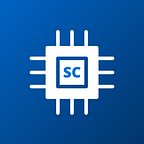Top 5 Books to Learn Verilog
Verilog HDL: A Guide to Digital Design and Synthesis Subsequent Edition
Verilog HDL is a language for digital design, just as C is a language for programming. This complete Verilog HDL reference progresses from the basic Verilog concepts to the most advanced concepts in digital design. Palnitkar covers the gamut of Verilog HDL fundamentals, such as gate, RTL, and behavioral modeling, all the way to advanced concepts, such as timing simulation, switch level modeling, PLI, and logic synthesis. Verilog HDL is a hardware description language (with a user community of more than 50,000 active designers) used to design and document electronic systems. This completely updated reference progresses from basic to advanced concepts in digital design, including timing simulation, switch level modeling, PLI, and logic synthesis.
Introduction to Logic Circuits & Logic Design with Verilog 2nd ed. 2019 Edition
This textbook for courses in Digital Systems Design introduces students to the fundamental hardware used in modern computers. Coverage includes both the classical approach to digital system design (i.e., pen and paper) in addition to the modern hardware description language (HDL) design approach (computer-based). Using this textbook enables readers to design digital systems using the modern HDL approach, but they have a broad foundation of knowledge of the underlying hardware and theory of their designs. This book is designed to match the way the material is actually taught in the classroom. Topics are presented in a manner which builds foundational knowledge before moving onto advanced topics. The author has designed the presentation with learning goals and assessment at its core. Each section addresses a specific learning outcome that the student should be able to “do” after its completion. The concept checks and exercise problems provide a rich set of assessment tools to measure student performance on each outcome.
This self-study guide came about as the result of the popularity of my textbook, Verilog Designer’s Library. That book is an intermediate to advanced level reference book about the Verilog Hardware Description Language. Shortly after its publication, the Institute of Electrical and Electronics Engineers (IEEE) approached me to create an introductory book, based on the Verilog seminar that I give around the world. Over the years I’ve used the feedback from students to try to make it the best introductory Verilog course available.
Digital Design: With an Introduction to the Verilog HDL, VHDL, and SystemVerilog
A clear and accessible approach to the basic tools, concepts, and applications of digital design A modern update to a classic, authoritative text, Digital Design, 5th Edition teaches the fundamental concepts of digital design in a clear, accessible manner. The text presents the basic tools for the design of digital circuits and provides procedures suitable for a variety of digital applications. Like the previous editions, this edition of Digital Design supports a multimodal approach to learning, with a focus on digital design, regardless of language. Recognizing that three public-domain languages―Verilog, VHDL, and SystemVerilog―all play a role in design flows for today’s digital devices, the 5th Edition offers parallel tracks of presentation of multiple languages, but allows concentration on a single, chosen language.
Digital Integrated Circuit Design Using Verilog and Systemverilog
For those with a basic understanding of digital design, this book teaches the essential skills to design digital integrated circuits using Verilog and the relevant extensions of SystemVerilog. In addition to covering the syntax of Verilog and SystemVerilog, the author provides an appreciation of design challenges and solutions for producing working circuits. The book covers not only the syntax and limitations of HDL coding, but deals extensively with design problems such as partitioning and synchronization, helping you to produce designs that are not only logically correct, but will actually work when turned into physical circuits. Throughout the book, many small examples are used to validate concepts and demonstrate how to apply design skills.
